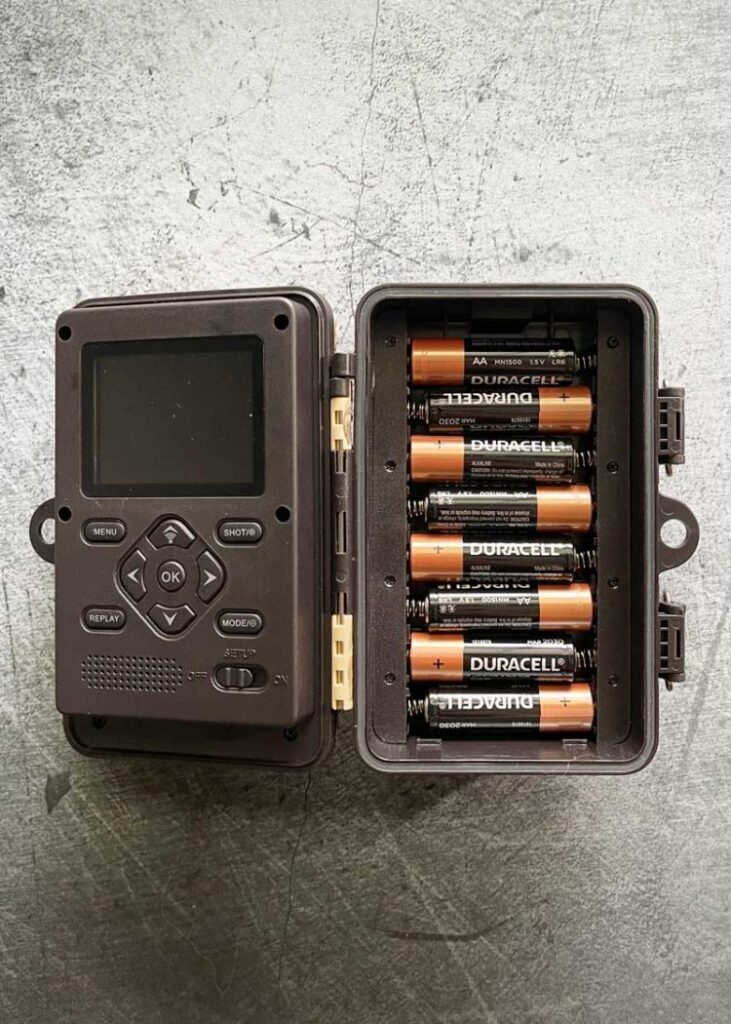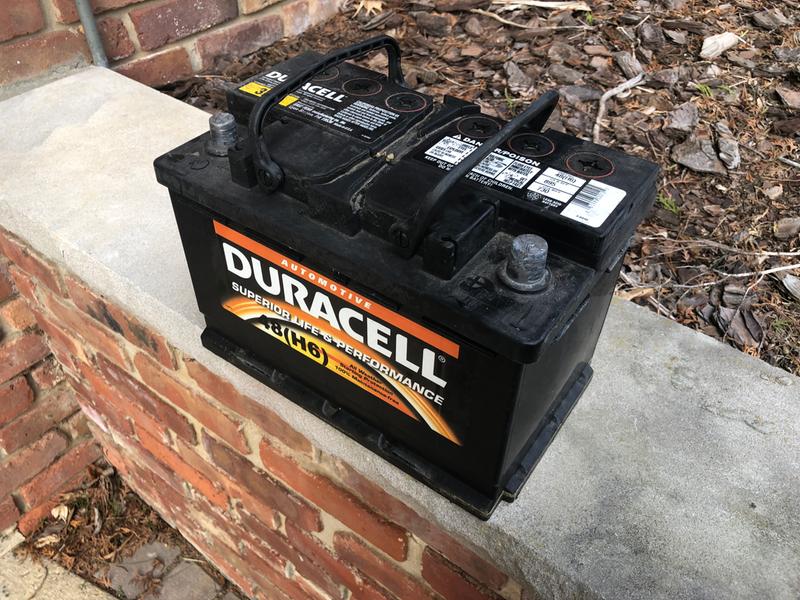On high-powered devices, a regular AA battery, with an average power of about 2,500 mAh, can be expected to perform consistently for 2 hours.
For low-powered devices like flashlights, brands like Duracell promise 10-20 hours of use.
What factors impact Duracell battery lifespan?
The lifespan of Duracell batteries is influenced by a constellation of factors, including the type of battery.
Quality of the Battery:
The quality of the battery plays a significant role in determining its lifespan. Higher-quality batteries are often designed with better materials and manufacturing processes, resulting in longer overall battery life.
Duracell, as a reputable brand, invests in research and development to maintain consistent quality standards, which can contribute to a longer-lasting battery.
Battery Type:
Different battery types, such as alkaline, lithium, and rechargeable, have varying lifespans due to their chemical compositions and construction.
- Alkaline batteries are common and affordable, but they have a moderate lifespan and are best suited for devices with low power consumption.
- Lithium batteries offer a longer lifespan than alkaline batteries and perform well in high-drain devices like digital cameras and power-hungry gadgets.
- Rechargeable batteries have a limited number of charge cycles, but they can be recharged multiple times, making them environmentally friendly and cost-effective over the long term.
Usage Patterns and Application:
- Battery life greatly depends on how batteries are used. Moreover, devices with consistent high power usage will drain batteries faster than those with intermittent use.
- Frequent use of devices at high power levels can lead to a shorter overall battery lifespan. For instance, a camera’s flash uses a lot of power and can decrease battery life significantly during heavy use.
Environmental Conditions:
- Temperature and humidity impact battery performance. Extreme temperatures, both hot and cold, can cause chemical reactions to occur faster, leading to a reduction in battery life.
- High humidity can also affect battery contacts and lead to corrosion, potentially reducing battery performance.
- It’s important to store batteries in a cool, dry place to maximize their lifespan.
What is the average lifespan of various Duracell battery types?

Across the spectrum of Duracell battery types, lifespans can vary significantly.
Alkaline Batteries:
- Typically, alkaline batteries generally last anywhere from 1 to 3 years, depending on usage and the device they’re powering.
- In addition, devices with lower power requirements, such as remote controls, may experience longer battery life.
Factors Affecting Lifespan in Different Devices:
- Higher-drain devices like digital cameras or toys with moving parts can drain alkaline batteries quickly.
- Devices left on for extended periods, even with low power requirements, can lead to faster depletion.
Lithium Batteries:
- Lithium batteries offer a significantly longer lifespan, often lasting 3 to 9 years.
- Their advanced chemistry allows them to provide steady power output throughout their life.
Suitable Applications and Scenarios:
- Lithium batteries excel in devices that require high power output, such as digital cameras, flashlights, and medical devices.
- They’re also ideal for long-term backup solutions due to their extended shelf life.
Rechargeable Batteries:
Lifespan and Number of Charge Cycles:
- Rechargeable batteries can last around 2 to 7 years, depending on usage patterns and the quality of the battery.
- The number of charge cycles varies; after a certain number, their capacity starts to decline.
Maintenance and Care Tips for Maximizing Lifespan:
- Properly charge and discharge rechargeable batteries to maintain their capacity.
- Store rechargeable batteries with a partial charge if they won’t be used for an extended period.
- Avoid overcharging, as it can lead to heat buildup and reduced lifespan.
What are effective tips to prolong Duracell battery lifespan?
Elevating the lifespan of Duracell batteries hinges on adhering to a set of effective tips:
Proper Storage Recommendations:
- Store batteries in a cool, dry place, away from direct sunlight and heat sources.
- Avoid keeping batteries in extreme cold, as it can reduce their capacity temporarily.
- Use airtight containers to prevent exposure to moisture and humidity, which can lead to corrosion.
Battery Usage Best Practices:
- Remove batteries from devices that won’t be used for an extended period to prevent leakage.
- If possible, remove batteries from devices during storage to avoid potential damage from battery leakage.
- Always follow the manufacturer’s recommendations for inserting and replacing batteries.
How to Identify When Batteries Are Losing Power:

- Devices may exhibit reduced performance, slower operation, or intermittent functioning as batteries lose power.
- Voltage testers can help assess the remaining capacity of batteries and determine whether they need replacement.
Recycling and Disposal Considerations:
Batteries contain materials that can harm the environment if not disposed of properly.
Consider recycling batteries through designated collection points to ensure proper disposal and reduce environmental impact.
References :
Duracell Official Website and Documentation:
Duracell’s official website (https://www.duracell.com/en-us/) served as a primary source for product specifications, technology details, and battery types. Information from Duracell’s own experts guided discussions on battery chemistry, longevity, and recommended usage patterns.
Battery and Energy Technology Journals:
Articles from respected battery and energy technology journals, such as the “Journal of Power Sources(https://www.sciencedirect.com/journal/journal-of-power-sources)” and “Battery Technology,” were consulted to understand the chemistry, physics, and engineering behind different battery types.
Moreover, these sources provided insights into battery lifespans, power density, and factors affecting performance.
FAQ’s :
Are Duracell lithium batteries worth the extra cost?
Yes, Duracell lithium batteries offer a longer lifespan compared to alkaline batteries, making them ideal for high-drain devices.
Can I extend the life of my Duracell rechargeable batteries?
Yes, by following proper charging and discharging practices and storing them with partial charge, you can maximize the lifespan of Duracell rechargeable batteries.
How can I store Duracell batteries to prolong their lifespan?
Store Duracell batteries in a cool, dry place, away from direct sunlight and extreme temperatures. Avoid humid environments to prevent corrosion.
What signs indicate that my Duracell batteries are losing power?
Reduced device performance, slower operation, or intermittent functioning can indicate that your Duracell batteries are losing power and need replacement.
Can I recycle Duracell batteries?
Yes, you can recycle Duracell batteries..
Are there specific devices where using Duracell batteries?
Yes, devices like emergency flashlights, medical equipment, and outdoor gear benefit from Duracell batteries with extended lifespans, ensuring reliability when needed most.
How can I choose the right Duracell battery type for my device?
Consider the power requirements of your device. Alkaline batteries are good for low-drain devices, lithium batteries excel in high-drain situations, and rechargeable batteries are eco-friendly for devices with frequent use.
Conclusion :
In conclusion, understanding the factors that influence the lifespan of Duracell batteries is essential for maximizing their performance and ensuring reliable power for various devices.
In addition, quality, battery type, usage patterns, and environmental conditions all play pivotal roles in determining how long Duracell batteries will last.
By following recommended practices, users can significantly extend the life of their batteries and make the most of their investment.
Proper storage practices, such as keeping batteries in a cool, dry environment, and employing battery usage best practices, such as removing batteries from unused devices, are key to maintaining battery performance over time.
Recognizing the signs of fading power, such as reduced device performance, empowers users to swap out batteries before critical situations arise.
Additionally, responsible disposal and recycling of used batteries contribute to environmental sustainability. By participating in battery recycling programs, users can ensure that batteries are disposed of in an eco-friendly manner, minimizing their impact on the environment.

